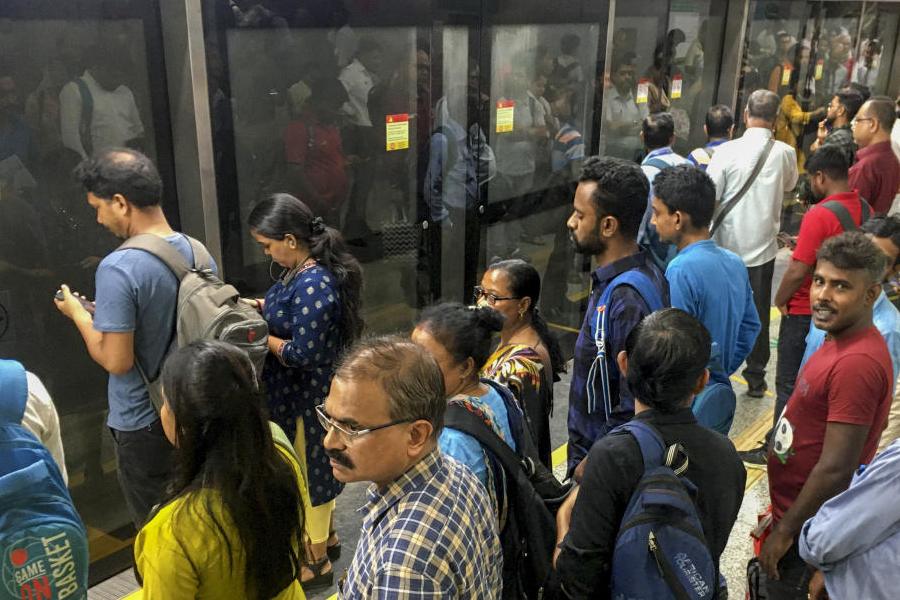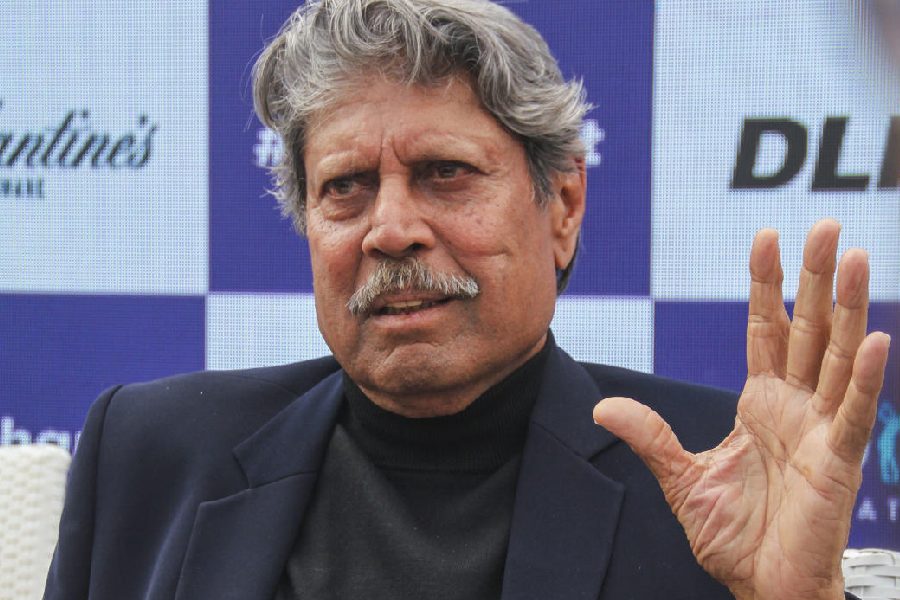 |
 |
 |
People are getting used to Buladi and her lectures. She stares out of roadside hoardings, urging Calcuttans to enjoy sex but not to forget to wear a condom. The plump Bengali matron is the messenger for a sex-awareness campaign launched by the Bengal State AIDS Prevention and Control Society (WBSAPCS). Promoting the drive ? through a spate of outdoor hoardings ? is advertising agency Ogilvy & Mather (&M).
&M is but one among hordes of advertising agencies and others that are increasingly turning to hoardings to pound home their message. In an era where advertisers are desperately trying to stand out among the crowd, outdoor advertising is going great guns. And outdoor ads are everywhere ? from traffic signals and the Eastern Bypass to busy market squares and bus stops.
Just a year ago, the city was awash with hoardings when Sony Entertainment Television (SET) launched its first reality show Indian Idol. “As a broadcaster, we realised that we had to reach out to potential viewers who may not have been watching SET,” says Nina Jaipuria, vice president, marketing & communications, SET. “And what could be better than the outdoors? That not only informed the viewer of the programme but also created a brand awareness,” she says.
Outdoor advertising accounts for the third largest chunk ? after the electronic and print media ? of the Rs 10,000 crore national advertising industry. Though it now constitutes eight per cent (Rs 800 crore) of the total, industry watchers say that the sector is growing. The booming retail and telecom industries along with the Indian consumer’s changing profile has fuelled its rise. Vasant Jante, publisher of the Bangalore-based Outdoor Advertising magazine, believes that the medium is expected to grow by 12 per cent in the next two years.
Insiders point out that the scope of outdoor industry has expanded as well. “Traditionally, outdoor advertising meant hoardings or at the most, pole kiosks,” says Indrajit Sen, president, Primesite, the Mudragroup’s out of home communications arm. “Now bus stops, shop signage, point-of-sale displays etc are all popular forms of the outdoor media,” says Sen.
Not surprisingly, foreign advertisers too are eyeing the segment. Clear Channel, one of the largest outdoor advertising firms with its headquarters in the US, has already set up office in India. It entered India via a venture with the Mumbai-based Mid Day Multimedia but it now operates independently. Says Adille Sumariwala, managing director, Clear Channel India, “We have expanded to nine cities in the country and we are trying to bring international practices to this sector.”
News Outdoor, the outdoor arm of media baron Rupert Murdoch’s Star, and Viacom, the global media company that owns MTV Networks and VH1, are also looking for partners in the Indian advertising industry to set up their outdoor advertising businesses here.
Indian outdoor advertising companies are not lagging behind either. While Times OOH and Jagran are some of the biggest pan-Indian outdoor agencies, several city-based agencies, including Pioneer, Selvel Advantage and Karukrit, have a segment of loyal clients.
Advertisers feel that the outdoor medium helps in micro-targeting consumers. Says Pratap Bose, president, Ogilvy Activation, “When telecom companies announce specialised packages for individual states, the outdoor medium works best.” Agrees Jaipuria of SET. He feels that the outdoor medium helps in localising the campaign and yet communicating the message effectively. For local companies, too, the outdoor medium is the platform to showcase their products. So if you have P.C. Chandra jewellers in Calcutta advertising extensively outdoors, then you have fast-food chain Nirulas promoting itself through hoardings in Delhi and Sheetal Design Studio in Mumbai. Advertisers are, of course, interested in the returns on their investments. There is a level of uncertainty in the electronic and print media, for the advertiser is uncertain about the number of people who actually catch an advertisement. But advocates of outdoor advertising hold that an advertiser is sure to get a floating crowd ? as well as passing cars ? in a busy place like a market or a bus stop. And the outdoor advertising medium has an added advantage because they work in tandem with local bodies.
In every city, the local municipal corporation or some public undertaking has several public sites under its domain. These include hoarding, bus shelters and even the metro rail. Since it is a source of revenue for the government, such contracts are usually handed over to site owners for a stipulated period of time on a tender basis. For example, while the Bombay Electric and State Transport (BEST), which runs buses inMumbai, earned almost Rs 60 crore from the last tenders issued to Times OOH and Prithvi Associates, the Calcutta Municipal Corporation earns around Rs 12 crore annually from outdoor ads.
Says a BEST spokesperson: “The price of tenders has gone up by 21 per cent since the last tender that was issued in 2003. With more players exploring the market it is but natural that the demand for these sites will go up.”
While in newspapers, ads work in terms of square centimetres, it is the seconds that count in the electronic media. In outdoor advertising, however, it is the display period that matters. According to Sen of Primesite, while OOH prefers a month period, slots are available for even a 10-day display. The cost varies with the kind of display vehicle ? billboard, bus shelter, pole kiosk, inflatable, mobile display or signage. Of course, it also depends on the location, depending on the kind of crowd it caters to. This variation also results in some overcharging by agencies.
Says the owner of a hoardings site on condition of anonymity: “It is easy for an agency to convince a client of a prime site location and make him cough up exorbitant fees for a 60X40 billboard.” The agencies do not exactly deny this charge but they defend themselves by saying they are making the most of a disorganised industry. But the industry hopes that with international companies entering the market, and with more and more national agencies making a bid to do so, some standard practices will soon emerge. And that would be worth a billboard or two.










